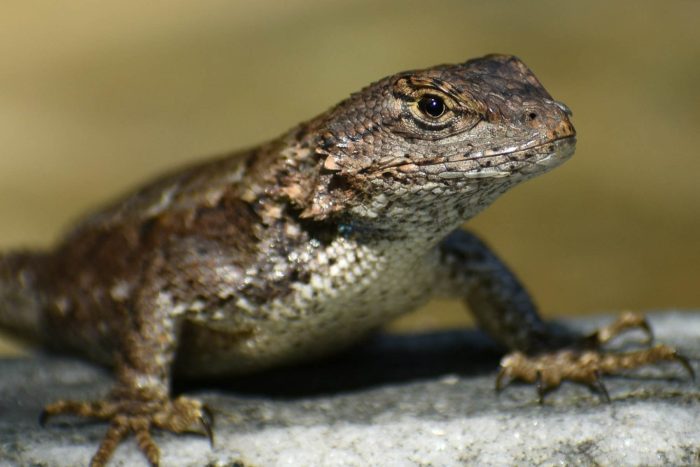Eastern Fence Lizard
Sceloporus undulatus
The eastern fence lizard is an arboreal species often found in dry woodlands throughout the Chesapeake Bay region.
This section shows one large critter image at a time. Use the thumbnails that follow to select a specific image to display here.

This gallery contains a grid of small thumbnails. Selecting a thumbnail will change the main image in the preceding section.
Appearance
Eastern fence lizards are most commonly grayish in color, but can range anywhere from brown to nearly black. While the females in this species typically have black horizontal patterning on their back. The males are distinguishable by their bright blue patches on their chin and underside during breeding season.
Feeding
Eastern fence lizards eat a wide variety of insects, spiders and other invertebrates.
Predators
Various snakes and carnivorous birds and mammals are predators of the eastern fence lizard, but their camouflage coloring and speed often allow them to steer clear.
Reproduction and life cycle
Male and female eastern fence lizards mate from April to August, and then quickly go their separate ways. Young females lay only one clutch of 3-16 eggs per year, but older females are able to produce up to four clutches. The eggs are deposited underneath the soil and hatch in late summer. The offspring receive no parental care, so the juvenile mortality rate is high in this species.
Did you know?
Eastern fence lizards, like all other native lizards, have fractured planes in the vertebrae of their tails that can cause the tail to break easily if it is seized, often allowing the lizard the chance to escape from predators. A broken tail will partially regenerate with time.
To claim territory, male fence lizards will flash the blue scales on their underside.
Eastern fence lizards are so fond of pine trees that they have been given the nickname “pine lizards.”
Sources and additional information
Eastern Fence Lizard - National Wildlife Federation
Species Profile: Eastern Fence Lizard (Sceloporus undulatus) - Savannah River Ecology Laboratory
Eastern Fence Lizard - North Carolina Wildlife Resources Commission
Field Guide to Maryland’s Lizards - Maryland Department of Natural Resources
